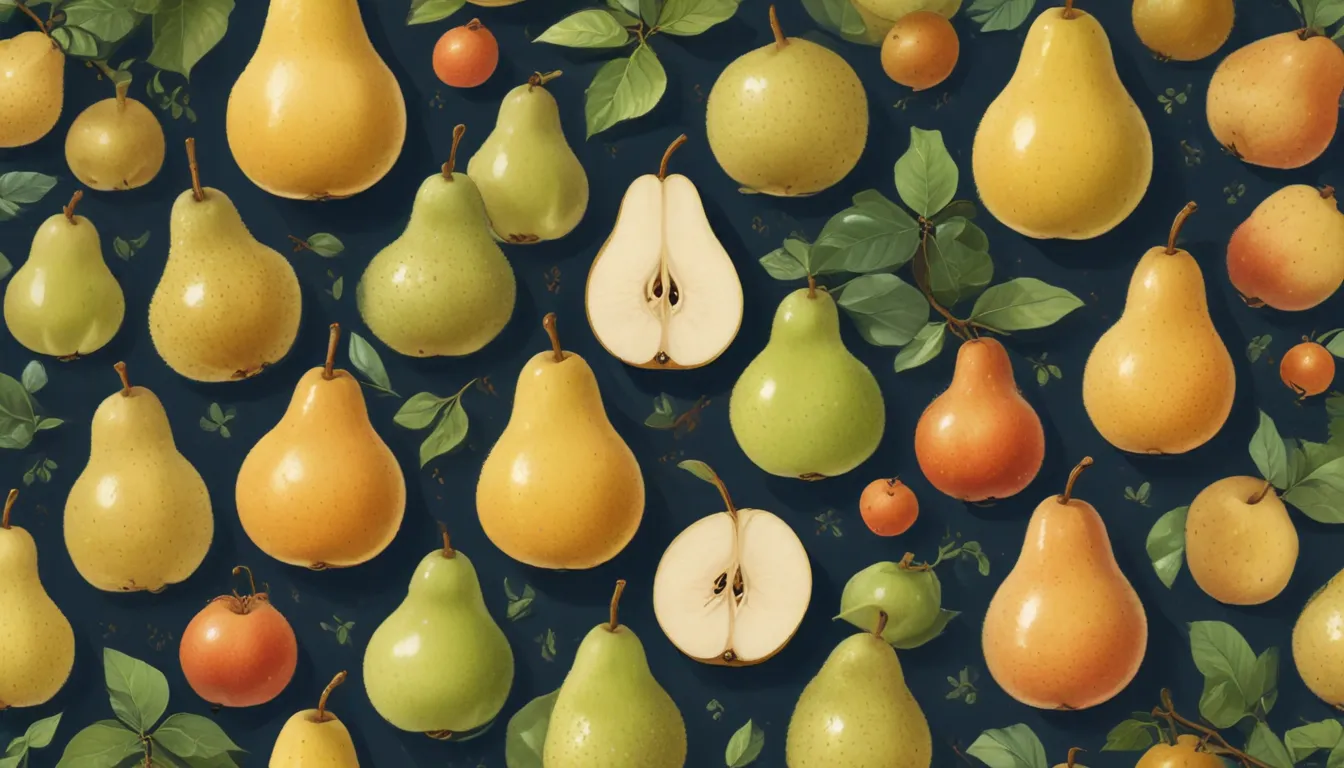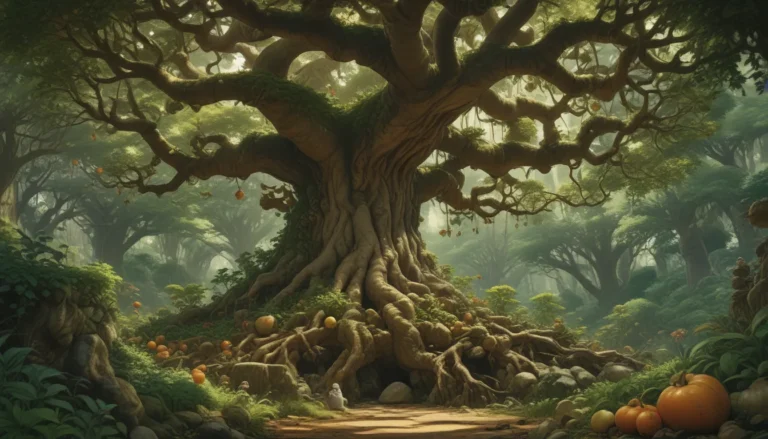Understanding the Best Fruiting Pear Varieties for Your Home Orchard

Don’t you just love sinking your teeth into a plump, juicy pear fresh from your own tree? The pleasure is unmatched! If you’re considering adding fruit trees to your garden, pears are a fantastic choice. Not only do they provide delicious fall fruit, but they also offer ornamental value throughout the year.
Pear trees are easy to grow, productive, and can yield high amounts of fruit. Whether you have a sprawling garden or a small yard, there are varieties suitable for your space. Plus, some types can even thrive in containers.
With an array of colors, shapes, sizes, flavors, and textures, pear trees are a versatile addition to any landscape. Most varieties are cold-hardy, making them suitable for a range of growing zones. Additionally, many pear types are excellent keepers, allowing you to enjoy your harvest for months to come.
In this comprehensive guide, we’ll explore some of the best pear varieties to cultivate at home. From classic favorites to lesser-known gems, there’s a pear tree for every taste!
Understanding Pear Tree Basics
Pears belong to the Pyrus genus within the Rosaceae family. There are two main categories of pear trees: fruiting and ornamental. While ornamental varieties may produce small, inedible fruits, they are primarily grown for their beautiful blossoms and colorful foliage.
Most fruiting pear trees are known for their longevity, with some cultivars producing fruit for up to a century! These fruit-bearing trees belong to two primary species: Asian and European pears.
- Asian Pears: Characterized by round, crisp fruits with an apple-like texture, Asian pears ripen on the branch before picking.
- European Pears: These pears have soft, buttery flesh with a classic teardrop shape. They are picked green and ripen in storage.
When growing pear trees in containers, opt for dwarf varieties or those specifically bred for container cultivation. Rootstocks play a crucial role in controlling the tree’s size, with standard, dwarf, and semi-dwarf options available. Keep in mind that while dwarf trees have a smaller overall growth, their fruits remain full-sized.
It’s essential to exercise patience when growing pear trees, as it can take several years for them to start bearing fruit. However, the bountiful harvests that follow are well worth the wait!
Pear trees’ hardiness zones and vernalization requirements vary depending on the cultivar. European types typically require a winter chill of 400 to 900 hours at temperatures below 45°F. However, there are low-chill varieties suitable for regions with milder winters.
The Importance of Pollination
While some pear varieties are self-pollinating and can produce fruit with just one tree, most benefit from cross-pollination with other cultivars. Planting different pear species that bloom simultaneously enhances fruit yields and quality.
Bees play a vital role in pollinating pear blossoms, and planting multiple trees that bloom together creates a more attractive environment for these important pollinators. If planting multiple trees isn’t feasible, consider neighboring gardens as potential sources of cross-pollination.
Pear trees are grouped into pollination groups based on their blooming times. Selecting varieties within the same pollination group ensures successful cross-pollination and optimal fruit production.
Top Pear Varieties for Home Gardens
Now, let’s delve into some of the best European pear cultivars for home cultivation. Whether you prefer sweet, juicy pears for fresh eating or firm varieties for baking and preserves, there’s a pear tree to suit your preferences.
1. Anjou
- Description: Large, short-necked fruits with pale green skin and a light pink blush. Sweet, juicy flesh with hints of citrus.
- Harvest Time: Mid-September to mid-October
- Growth: 12 to 18 feet tall, requires 800 chill hours
- Hardiness Zone: Zones 4 to 9
2. Baldwin
- Description: Oblong fruits in light yellow with a red tint. Sweet, semi-firm flesh ideal for baking and fresh eating.
- Harvest Time: Mid-August
- Growth: 15 to 25 feet tall, self-pollinating, requires 150 chill hours
- Hardiness Zone: Zones 5 to 9
3. Bartlett
- Description: Large yellow or red bell-shaped fruits with buttery, smooth, juicy white flesh.
- Harvest Time: End of August
- Growth: 12 to 20 feet tall, requires 800 chill hours
- Hardiness Zone: Zones 5 to 7
4. Bosc
- Description: Oblong fruits with warm, cinnamon colored skin and a unique honey-sweet flavor.
- Harvest Time: Early September
- Growth: 12 to 18 feet tall, requires 500 to 600 chill hours
- Hardiness Zone: Zones 4 to 9
5. Comice
- Description: Sweet, succulent fruits with light green skin and a rosy blush. Buttery flesh perfect for fresh eating.
- Harvest Time: Mid-September to mid-October
- Growth: 12 to 18 feet tall, semi-dwarf variety, requires 200 to 600 chill hours
- Hardiness Zone: Zones 4 to 9
6. Hood
- Description: Chartreuse green pears with sweet, mild flesh. Ideal for fresh eating, baking, and canning.
- Harvest Time: Early August
- Growth: 15 to 20 feet tall, self-fertile, requires 100 to 200 chill hours
- Hardiness Zone: Zones 7 to 9
7. Kieffer
- Description: Oblong fruits of yellow with a light russet spotting. Crisp, coarse flesh suitable for baking and preserves.
- Harvest Time: Mid-September to mid-October
- Growth: 10 to 20 feet tall, self-fertile, requires 350 to 400 chilling hours
- Hardiness Zone: Zones 4 to 9
8. Pineapple
- Description: Large, oblong pears with a golden skin and russet overtones. Crisp, grainy flesh with a pear/pineapple flavor.
- Harvest Time: Mid-July
- Growth: 15 to 20 feet tall, self-fertile, requires 150 chill hours
- Hardiness Zone: Zones 5 to 9
9. Seckel
- Description: Snack-sized, sweet fruits with a golden green color and aubergine blush. Ideal for fresh eating and preserves.
- Harvest Time: Mid-September
- Growth: 12 to 15 feet tall, requires 500 to 600 chill hours
- Hardiness Zone: Zones 6 to 9
10. Summercrisp
- Description: Round pears with golden skin streaked with crimson. Crisp, juicy flesh suitable for fresh eating or preserves.
- Harvest Time: Mid-August
- Growth: 18 to 25 feet tall, requires 800 chill hours
- Hardiness Zone: Zones 3 to 9
11. Sunrise
- Description: Yellow fruits with a light blush and juicy, sweet flesh. Ideal for fresh eating and desserts.
- Harvest Time: Early August
- Growth: 8 to 10 feet tall, requires 600 chill hours
- Hardiness Zone: Zones 5 to 8
Selecting the Perfect Pear
Now that you’re familiar with some of the top pear varieties available, it’s time to choose the perfect one for your garden! Whether you’re drawn to the traditional flavors of ‘Bartlett’ or the unique taste of ‘Comice,’ there’s a pear tree waiting to thrive in your orchard.
For detailed guidance on cultivating fruiting pear trees, explore our comprehensive growing guide. By selecting cultivars from the same pollination group, you’ll ensure a bountiful harvest of delicious, homegrown pears.
Have a favorite pear variety that we didn’t mention? Feel free to share it with us in the comments below! For more pear-growing tips and tricks, check out our pruning and propagation guides.
_





